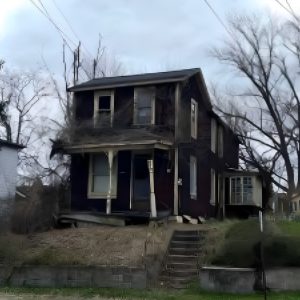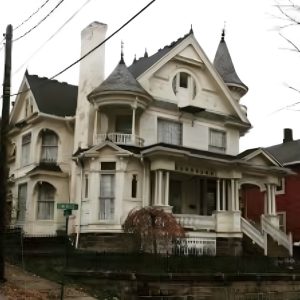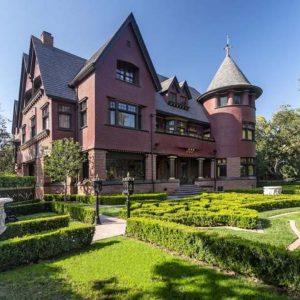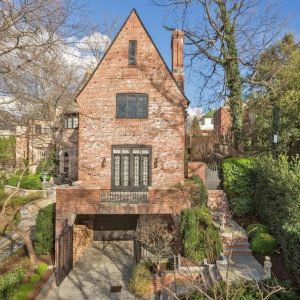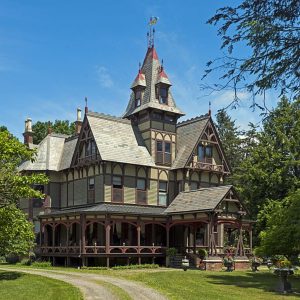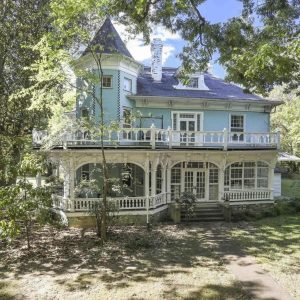Renovating an abandoned mansion: Rockwell House before and after
Miraculous renovation of a ruined old mansion
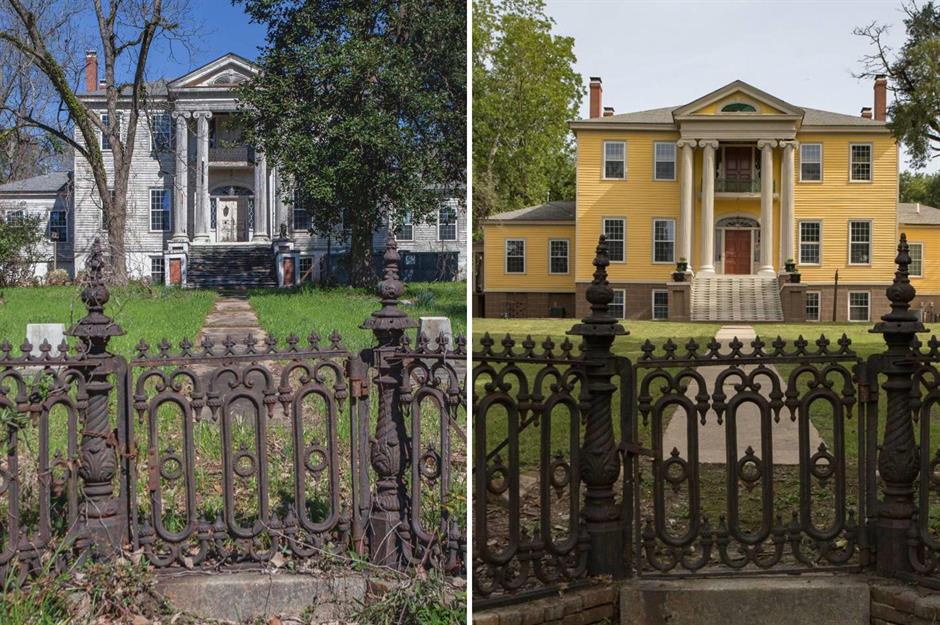
Rescuing this derelict 19th-century mansion was a labour of love for three enterprising investors. Once a crumbling relic of yesteryear, the remarkable residence has been painstakingly restored, reclaiming its status as a local landmark of Milledgeville, Georgia once more. Photographed by Leland Kent of Abandoned Southeast before and after its overhaul, you won’t believe the jaw-dropping transformation. Click or scroll on to see the incredible makeover…
Forlorn and forgotten

Pictured here in 2017, Rockwell House was hidden behind overgrown greenery and locked away beyond forbidding wrought-iron gates. The mysterious abandoned mansion was constructed in 1838 for Colonel Samuel Rockwell, who was a soldier, an attorney and a slaveholder. Designed by architect Joseph Lane in the Federal style with Greek Revival elements, its steep steps and imposing Ionic columns reference a grand ancient Greek temple.
Faded grandeur

After Colonel Rockwell’s death in 1841, the house eventually passed to Democratic Party politician Herschel Vespasian Johnson, who would become the Governor of Georgia. When Johnson died, the house passed through the hands of numerous merchants over the years. Insurance agent Marshall Bland purchased the property in 1904, before it passed to his cousin, Oscar Ennis, who lived there with his family until 1962.
New beginnings
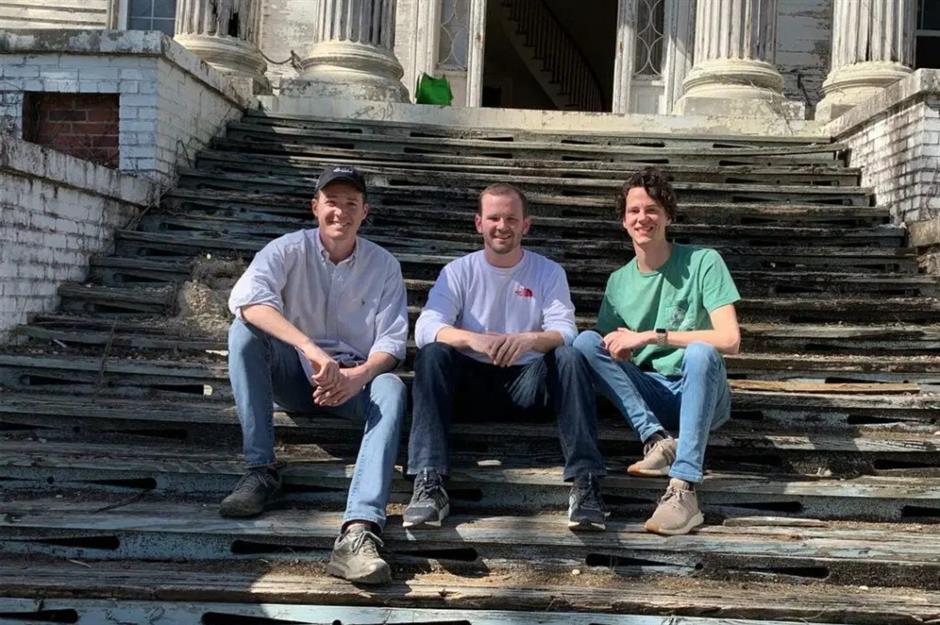
After 70 years of unoccupied neglect, Rockwell House was in a sorry state of disrepair. Spotting the potential of this intriguing old building, three young investors took on the challenge of restoring the faded southern belle to her former glory. In 2019, Ross Sheppard, Jacob Hawkins and Will Walker bought the mansion for a bargain $350,000 (£254k). The trio are Georgia locals with a passion for historic houses, with Sheppard being a realtor specialising in historic home preservation.
Before: the gates and exterior
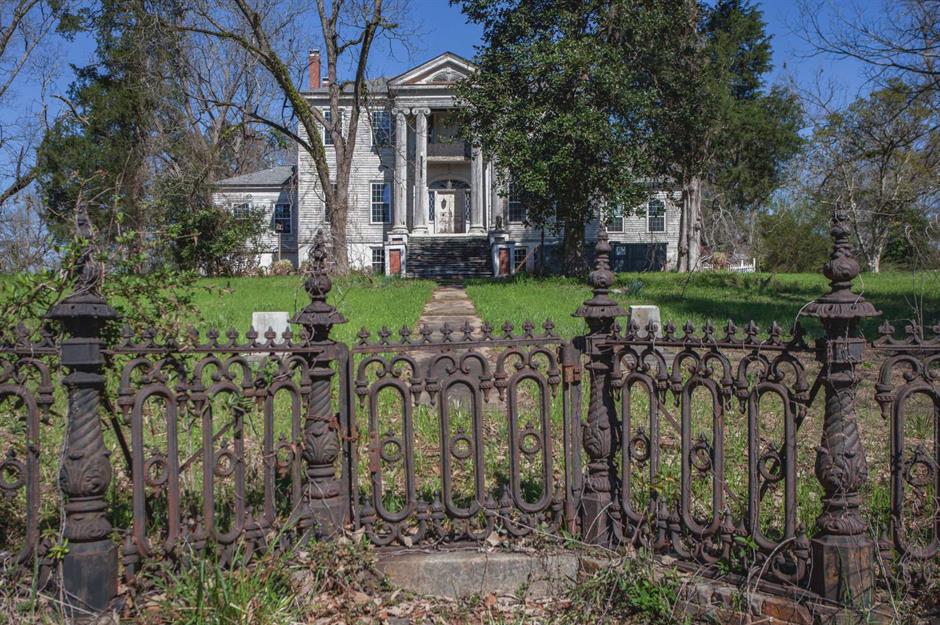
The team also had the help of property conservation expert Kyle Campbell from Preservation South during the restoration. While breathing new life into the forlorn mansion was no small task, the rewards were plentiful. Members of the Ennis family visited their old home during the restoration, including Buddy Ennis, who spent the first 15 years of his life there. Delightfully, Buddy helped uncover his childhood footprint, encased in the concrete on the back steps.
After: the gates and exterior
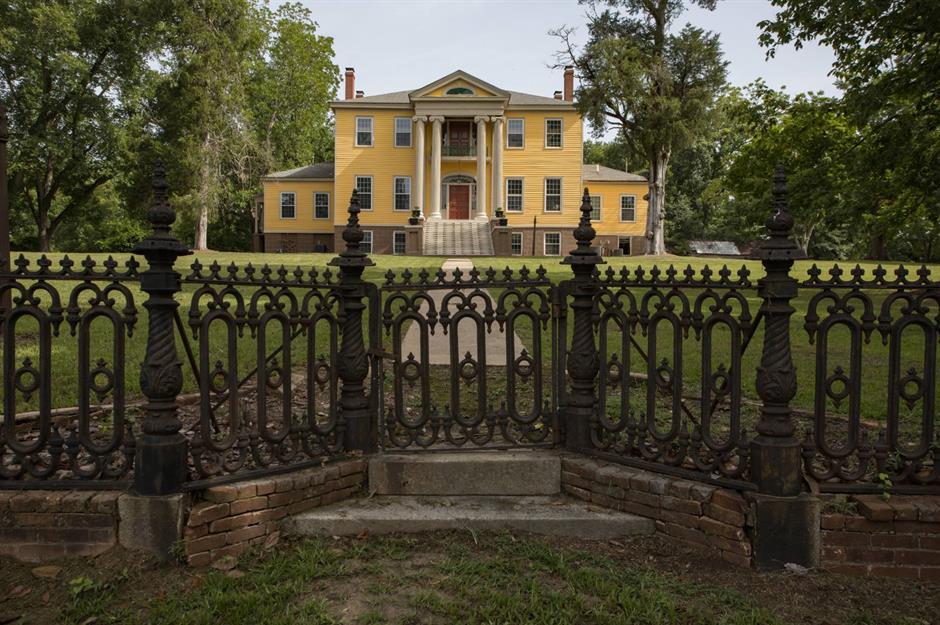
Pictured here in February 2021, the overhauled house is resplendent. The sunny yellow colour is faithful to the original exterior, with traces of the shade found on the building beneath newer layers of paint. Ochre is a natural pigment mix of iron oxide, clay and sand, ranging in tone from yellow to deep orange or brown. Using paint analysis and historic records, the investors mixed this beautiful custom shade for the house.
Before: the entryway
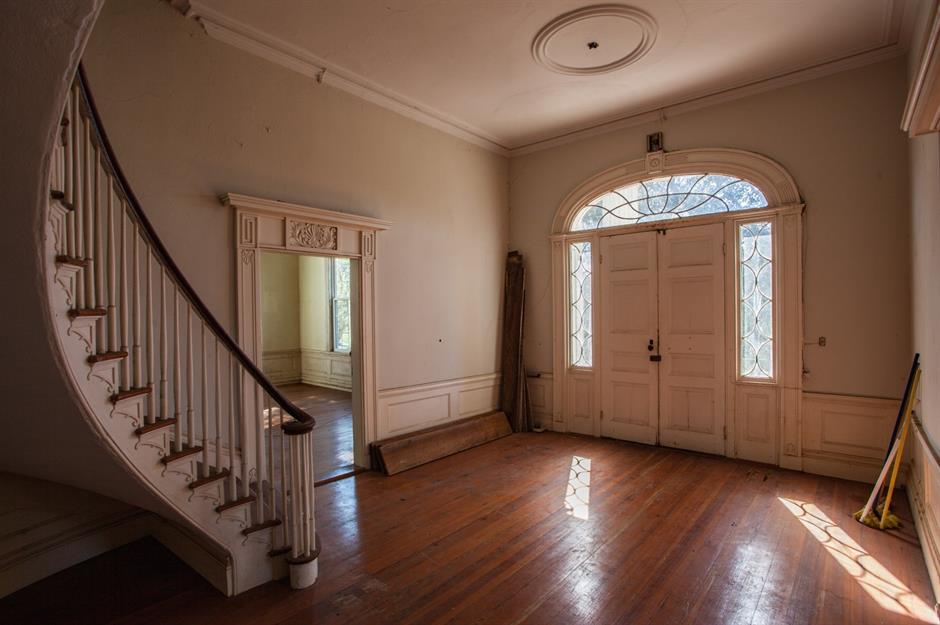
Here’s how the entrance hall looked before the renovation. Although time-worn, it was one of the better-preserved areas, with decorative mouldings and a sweeping spiral staircase taking centre stage. The grand external double doors of the main entrance are surrounded by patterned glass to allow light to stream into the space.
After: the entryway
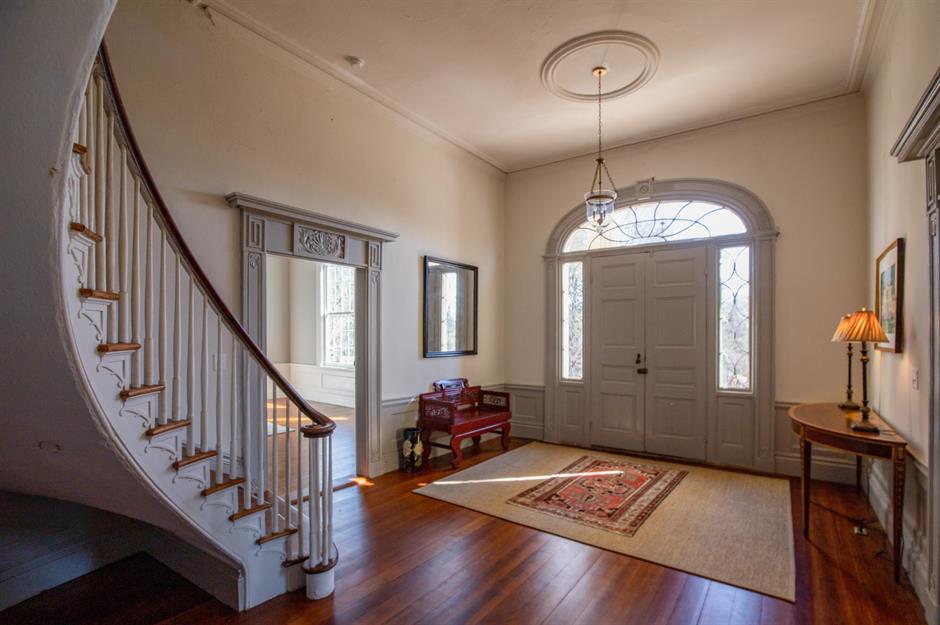
Now transformed, great care has gone into smartening up the hallway, while still preserving its fine period features. The house is a wood-frame construction, covered in clapboard siding with stucco over the brick and granite foundations, which was then scored and painted to look like brownstone blocks.
Before: the grand sitting room

You get a great sense of the mansion’s spacious proportions in this downstairs sitting room, pictured before the overhaul. The deep alcoves, tall windows, decorative moulding and grand fireplace complete with carved Greek-style columns draw the eye. These fine architectural details even manage to distract from the dilapidation of the crumbling plaster across the ceiling.
Before: the grand sitting room

Tall sash windows are an important design feature throughout the mansion, but especially in this sitting room, pictured prior to the renovation. By the time the investors bought the house, the original wood frames had been replaced with white vinyl. But luckily all the original sashes had been retained, so most could be restored. Work is ongoing to return the shutters to their former glory – historically, they were painted a dark green hue called Charleston green.
After: the grand sitting room
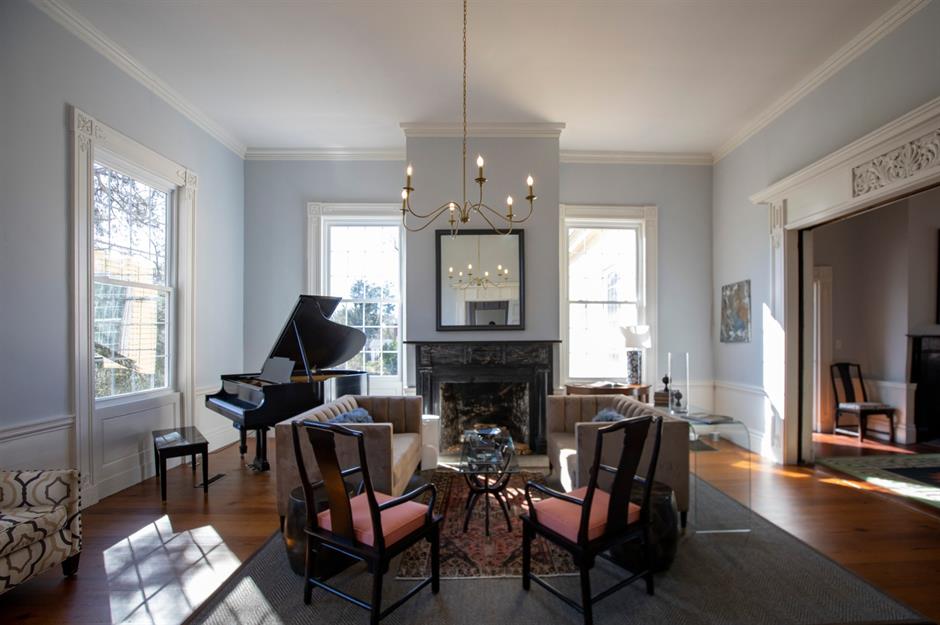
The renovated room has now been sympathetically restored, retaining all of its fabulous original features. A scattering of modern furniture, artwork and a grand piano complete the look. Guests shouldn’t be alarmed when the piano starts playing itself, as it’s actually a digitally operated pianola!
After: the lounge
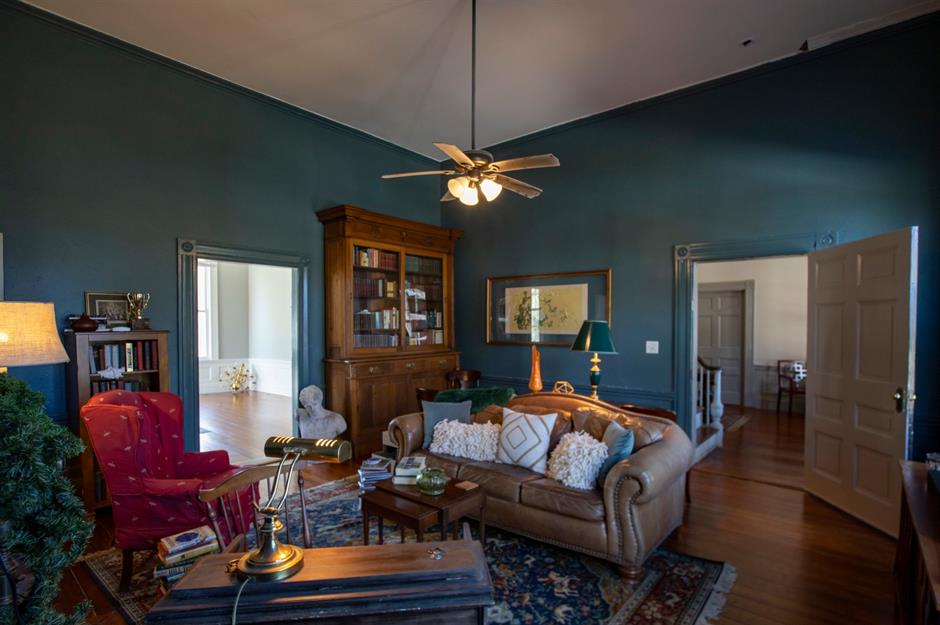
Meanwhile, comfort springs to mind when you look at this refurbished sitting room, complete with warming blue-green walls – a far cry from the sparse space before. The floor plan of the mansion itself originally offered eight huge rooms spread over two floors, but the renovation and redesign have resulted in 14 relaxing rooms to enjoy.
Before: the dining room
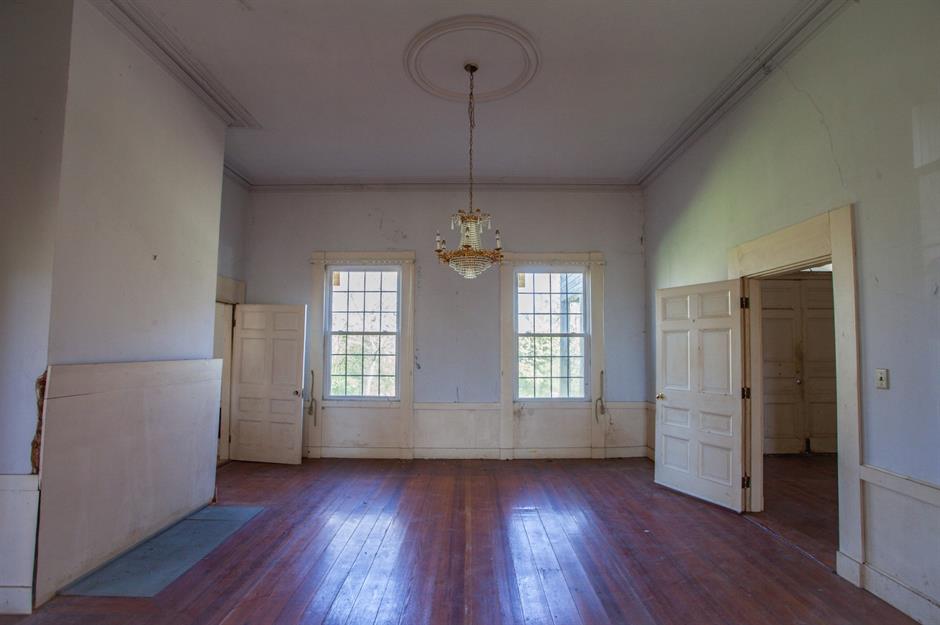
Previously, the dining room was a shell of its former glory. As the house decayed, the Winterthur Museum in Delaware stepped in to buy the room’s historic features so they could be preserved. The museum purchased the black marble mantelpiece, intricate woodwork, architrave and impressions of the plaster around the ceiling.
After: the dining room
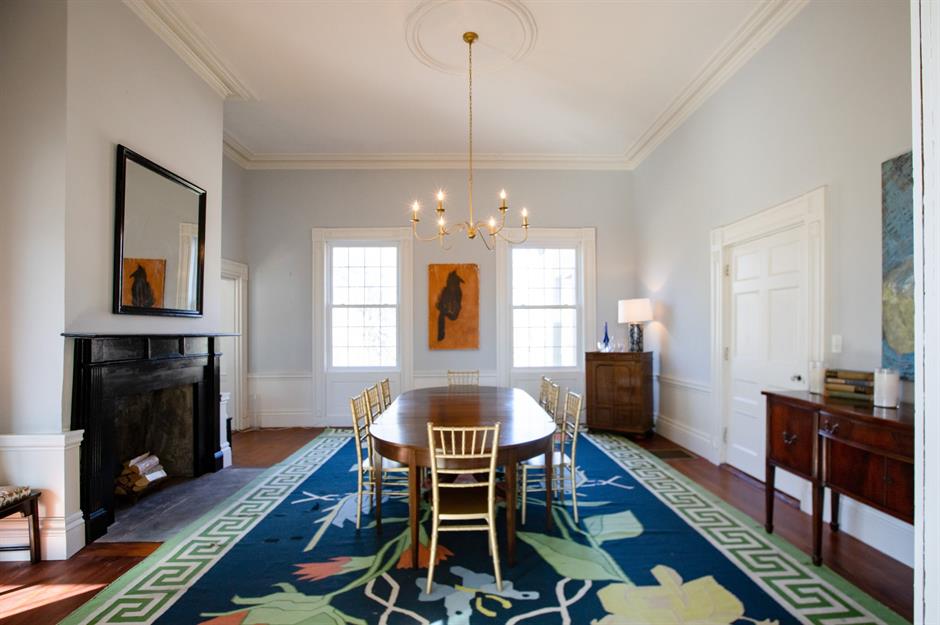
Now look at how the sorry space has been transformed into a light and airy modern dining room that sits in harmony with its historic features. Notice the hidden original fireplace that was discovered during the renovation too – in some rooms, vinyl flooring was also removed to reveal beautiful, original wooden floors.
After: the dining room
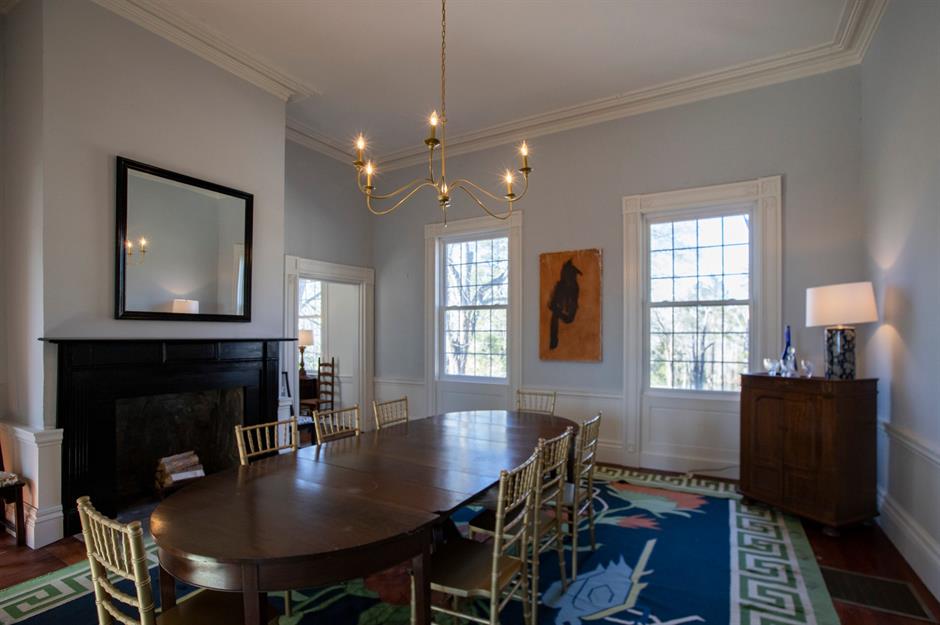
The scope of the renovation was huge and included installing new electrical, plumbing, heating and air-conditioning systems. Specialist decorators finished the original wood floors, patched up plaster walls and repaired ornate plaster detailing, painstakingly replicating missing architectural details. All the restoration work had to meet the exacting Standards for Historic Preservation set in law.
Before: spiral staircase
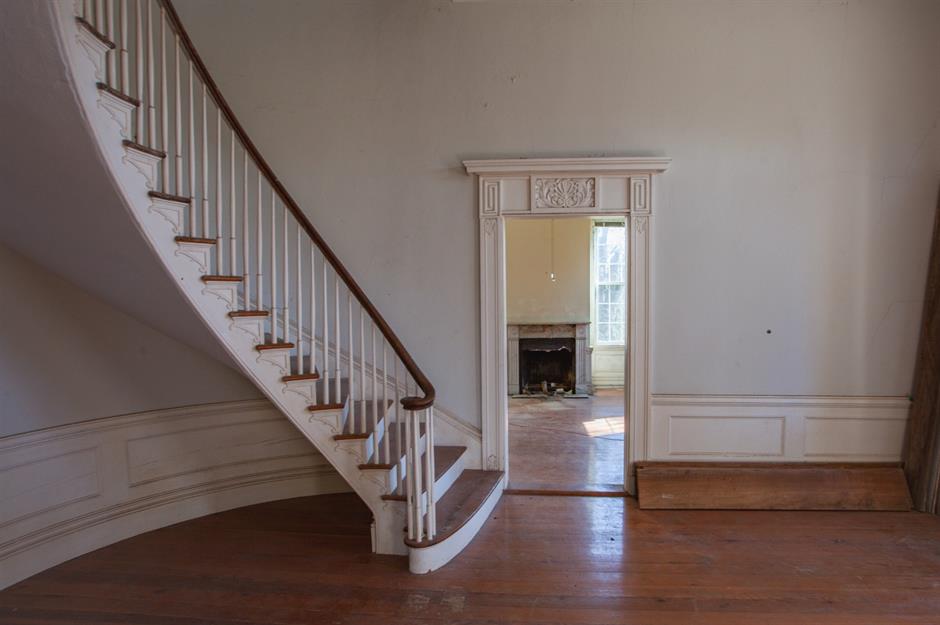
Pictured here prior to the renovation, Rockwell House has a very unusual oval, spiral staircase. It may be a copy of the ‘chaperone staircase’ found in some high-society homes of this period. These provided a vantage point for chaperones of young men and women who were socialising on the ground floor, so guardians could keep a beady eye on their charges, ensuring no scandalous behaviour went on in the house!
After: spiral staircase
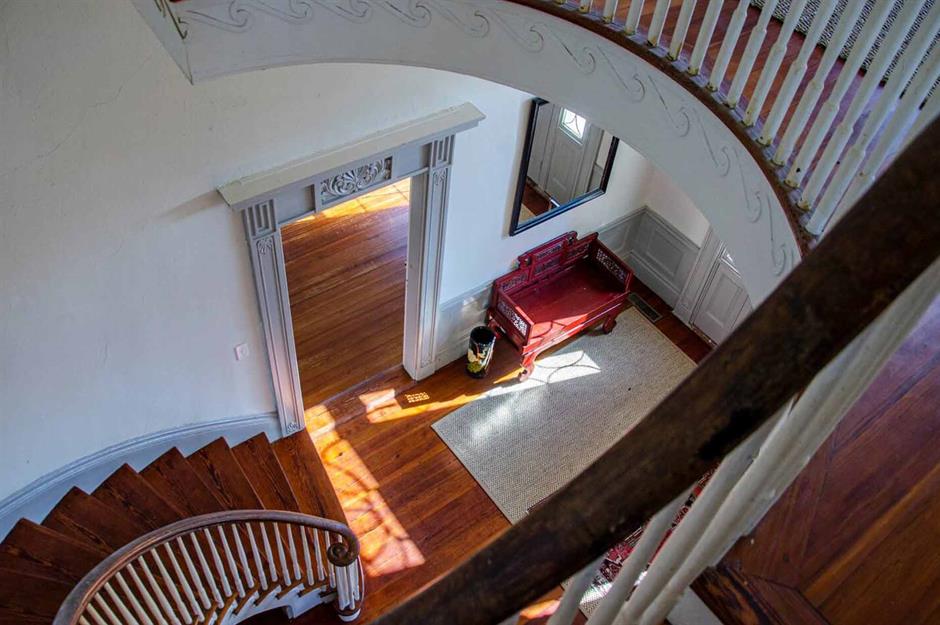
Now restored and the peeling paintwork remedied, the grandeur of this statement staircase can truly be admired, from the carved balustrades to the intricately patterned woodwork. In fact, the craftsmanship involved in constructing this home is awe-inspiring, with each piece of lumber hand-cut. The structure was built using a notch-and-peg system, meaning nails were not used except on the exterior weatherboarding and on interior slats holding plaster.
Before: the upper floor
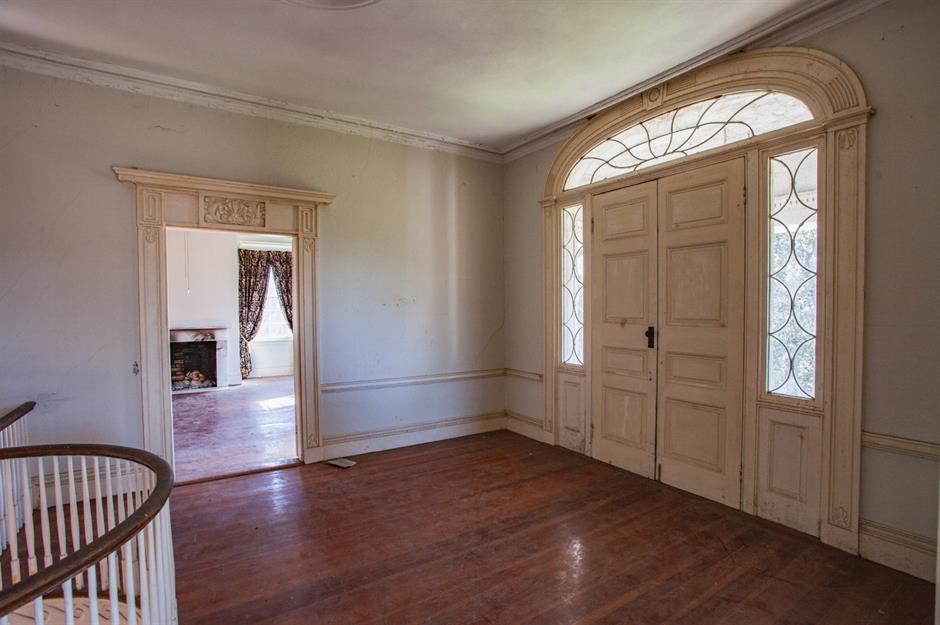
Here’s the upper landing before the renovation – it neatly mirrors the layout and architecture of the regal entrance foyer below. Like that space, it was a little worse for wear, although the leaded glass arch flanking the balcony doors has weathered the years remarkably well.
After: the upper floor
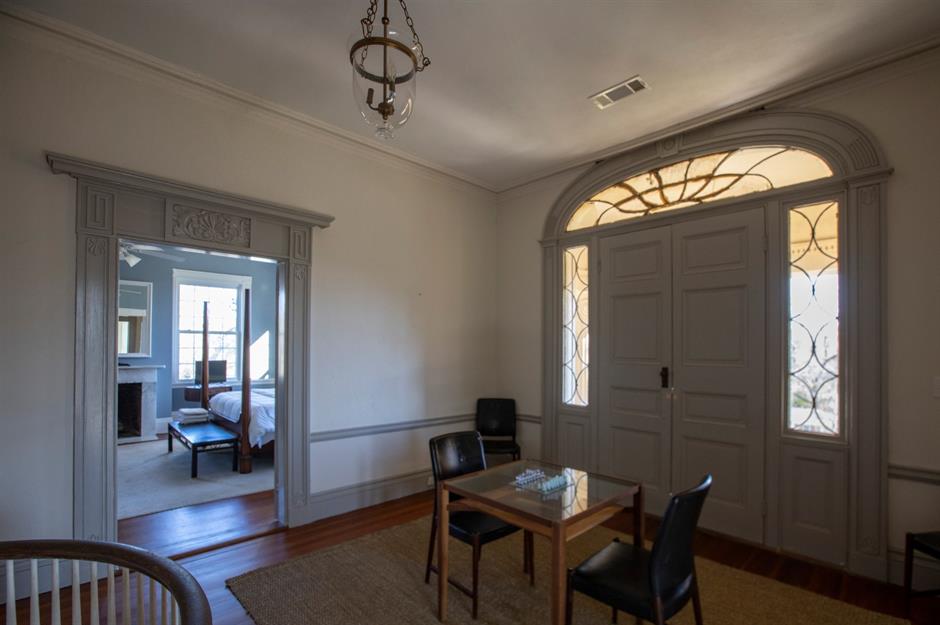
Now lovingly restored, the landing’s renovation has remained faithful to its original design. But the upper floor didn’t always look so refined. In 1967, Dr Robert Watson bought the house and began to restore it. Disaster struck the mansion, however, when one of the workers began removing paint from the walls of the wooden house with a blow torch. Unsurprisingly, the upstairs portion of the property went up in flames.
Before: the master bedroom
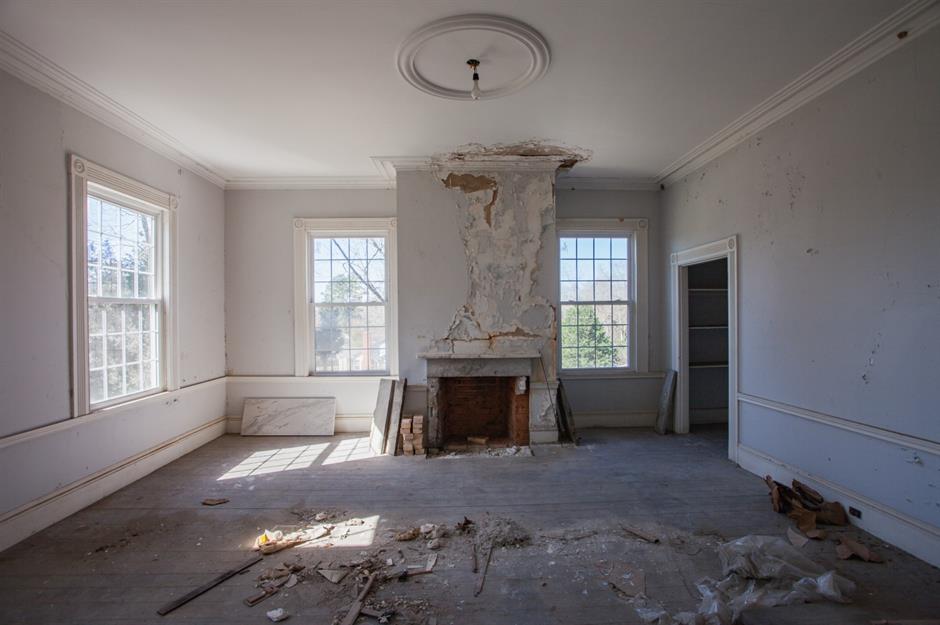
You can see how bad the destruction was in this room. Later, water damage compounded the mess. The old house very nearly didn’t survive past the early 1970s. After the fire, a local man wanted to buy the mansion and strip it of its remaining fine interior details. Luckily, realtors Joanne and Cecil Ogden stepped in to save the house. It was added to the National Register of Historic Places in 1978, but renovations stalled and the property continued to deteriorate.
After: the master bedroom
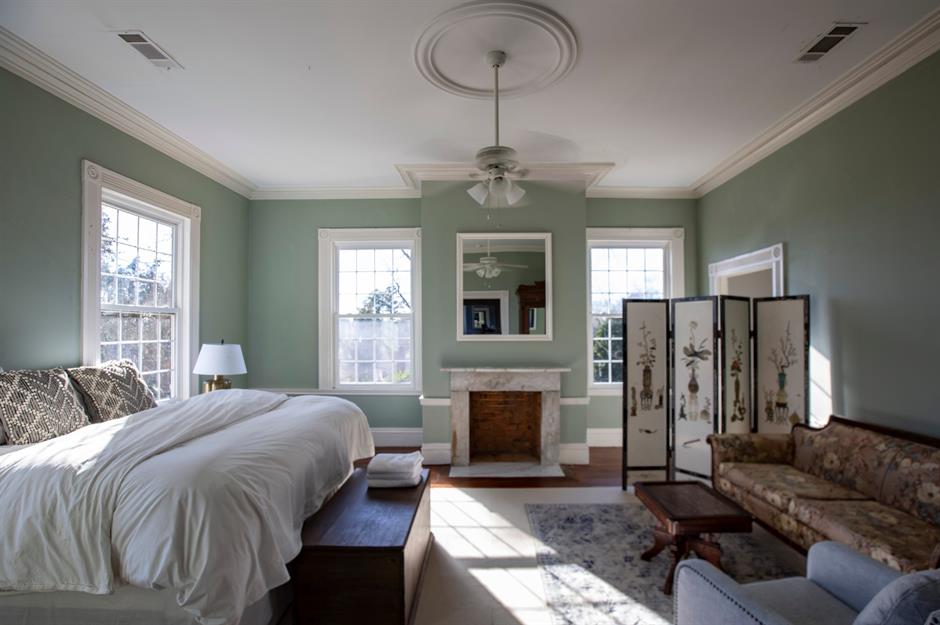
Happily, our three investors turned around the fortunes of the forlorn landmark. What a stunning transformation! Talented local mason Mr Woodrow helped restore the ruined room, as well as many other areas in the house. The Green Suite is located at the top of the spiral staircase and offers a king-sized bed, a sitting area and a private bathroom with a cavernous shower.
After: the master bedroom

Elegant modern bathrooms have been added to some of the guestrooms. Sadly, much of the decorative cornicing and plasterwork around the doorways had deteriorated over the years. But during the restoration, surviving mouldings in the dining room were able to be scanned, printed in 3D and replicated in other areas of the house – a groundbreaking example of modern technology reviving architectural details from the past!
After: the pink bedroom
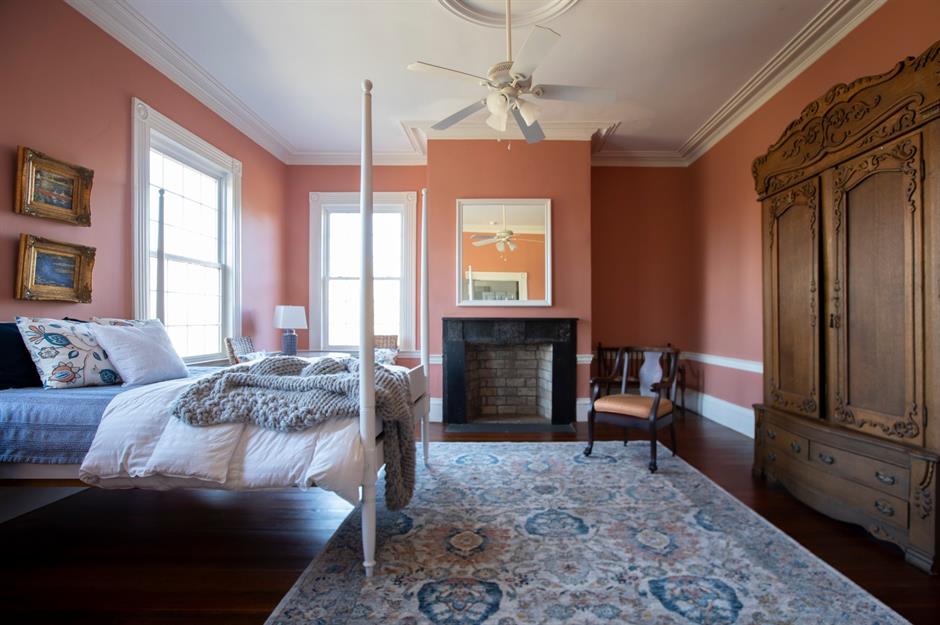
Elsewhere on the first floor, the welcoming Pink Suite is tucked away above the rear staircase. Its vibrant coral walls seem to change throughout the day as the light levels shift. The punchy hue is balanced out with traditional carved wooden furnishings and a luxurious four-poster bed.
After: the Blue Room
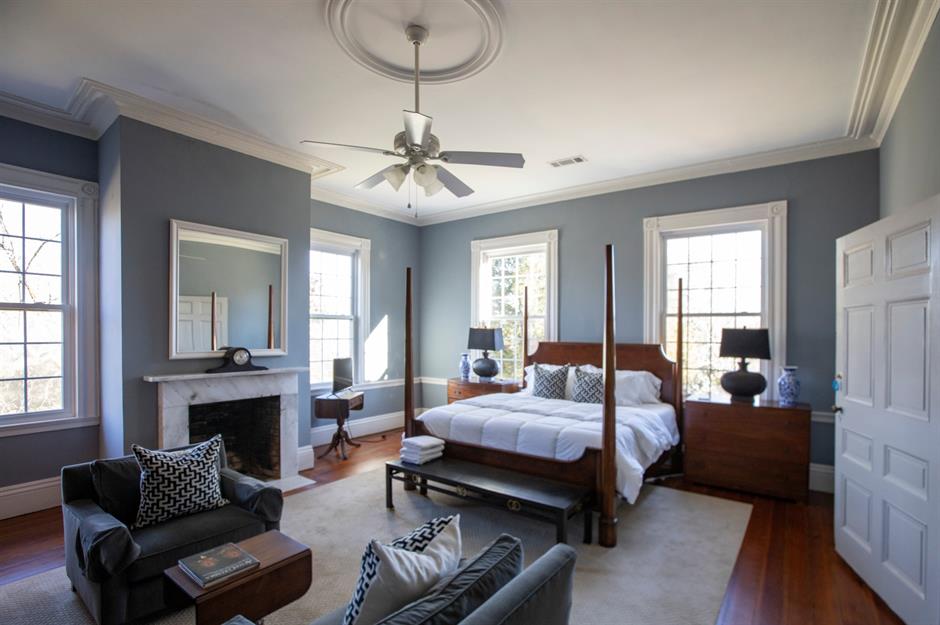
Lined with beautiful floor-to-ceiling sash windows, the beautifully renovated Blue Room is a one-room suite with its own private sitting area. Like the other bedrooms, luxurious contemporary touches have been balanced with reverence for the space’s historic architecture and detailing. How could you not get a great night’s sleep with that palatial king-sized bed?
Before: the garden
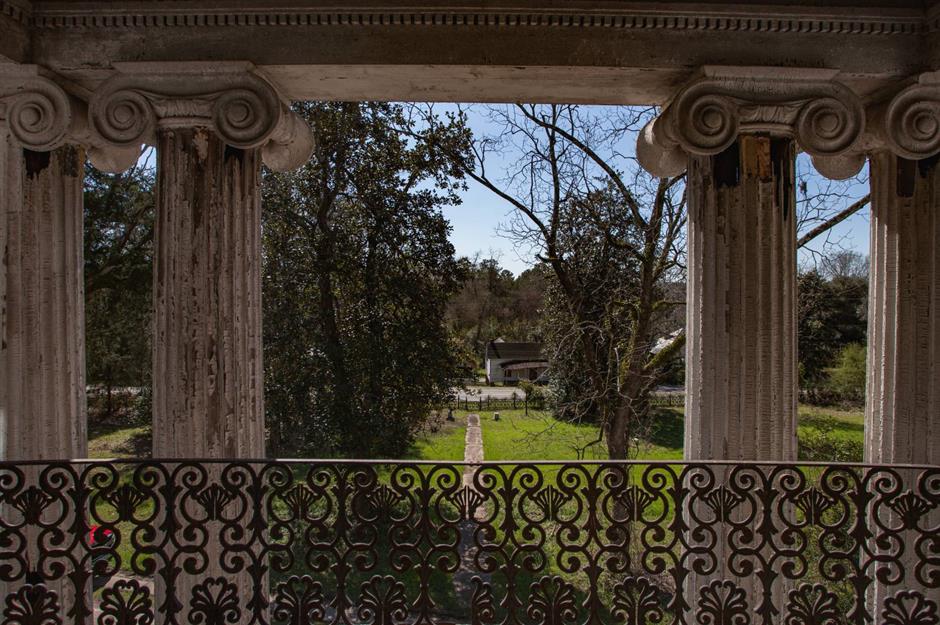
Pictured before the estate’s overhaul, the overgrown grounds had been somewhat reclaimed by Mother Nature. Local legends abound about the mansion, and according to one rumour, there’s a hoard of gold concealed on the grounds beneath the foundations. It’s not too difficult to imagine Colonel Rockwell or even Governor Johnson stashing away some gold bars beneath one of the Ionic columns…
After: the garden

While it doesn’t seem that a secret stash of gold was unearthed during the project, the natural beauty of the estate certainly was. Shown here after the overhaul, the investors have tidied up the overgrowth and landscaped the verdant grounds, while preserving the 12-acre garden’s grove of old oak and magnolia trees.
A triumphant transformation
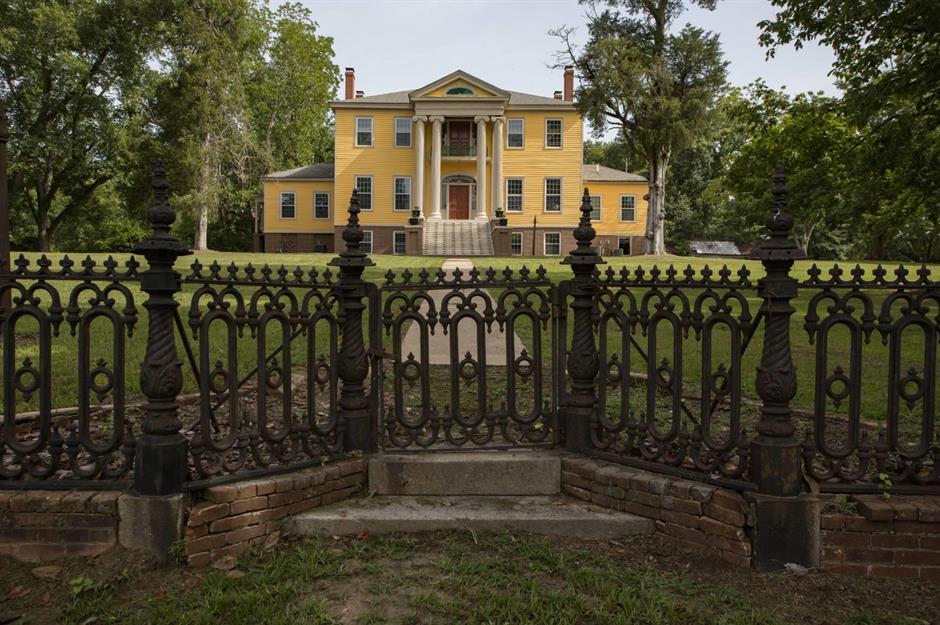
There’s no doubt about it, this historic home makeover was a shining success. Now available to rent via Airbnb for overnight stays, as well as for weddings and events, you can experience a grand old slice of Deep South history for yourself. To find out more about this beautifully restored landmark, check out the mansion’s website and follow the restoration journey on Facebook.
